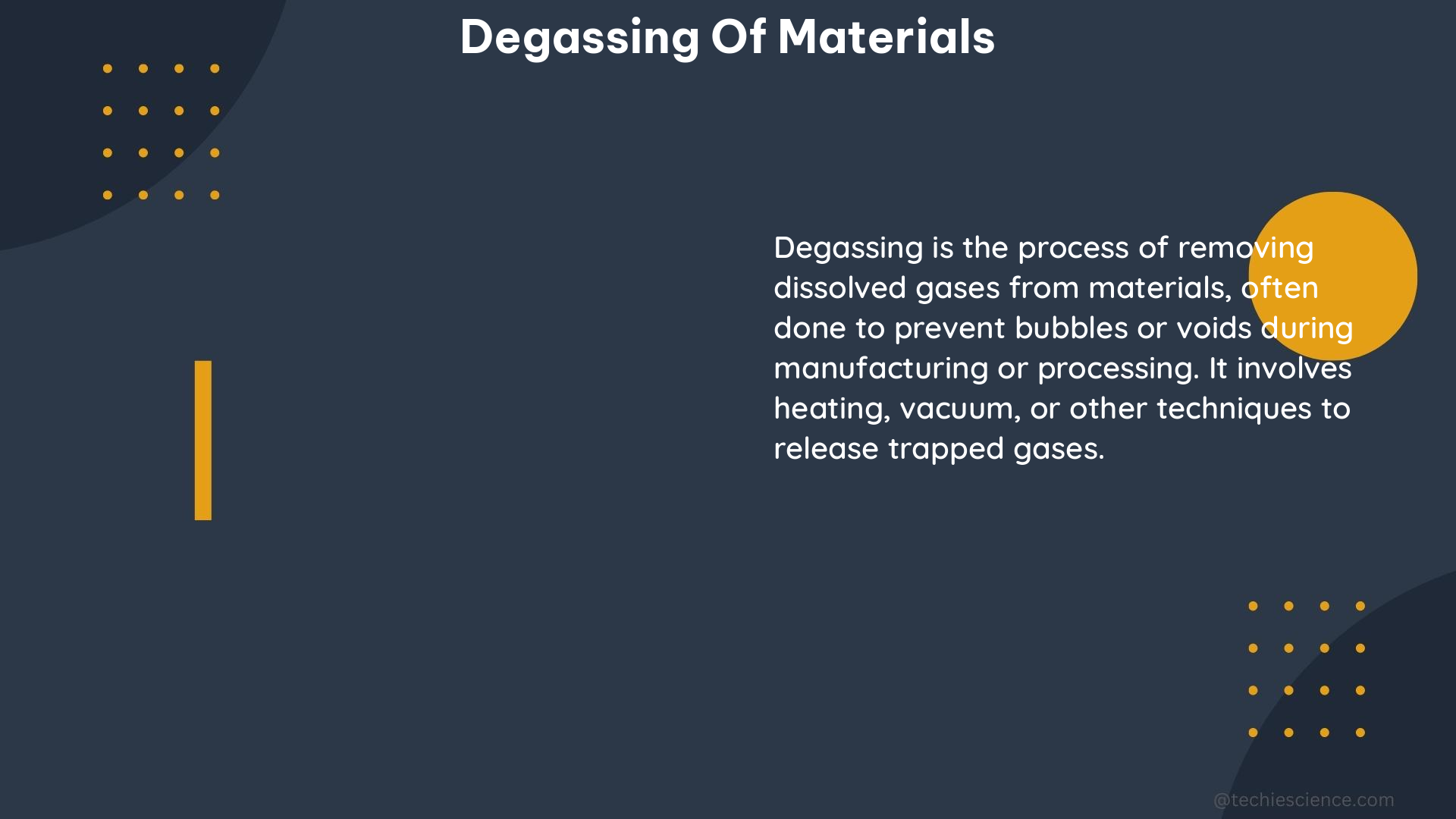Degassing of materials is a crucial process in various industries, including chemical, pharmaceutical, and food processing. It involves the removal of dissolved gases from liquids or gases from solids, ensuring the quality and performance of the final product. The efficiency of degassing can be measured through various quantifiable parameters, such as the percentage of gas removed, flow rate, vacuum pressure, solvent back-pressure, tube material, tube length, and solvent oxygen solubility.
Inline Continuous Flow Degassing Systems
One effective approach to degassing is the use of an inline continuous flow degassing system based on a gas-permeable membrane inside a vacuum chamber. This system has been found to be highly efficient, capable of removing up to 99.9% of ambient oxygen from solvents at a flow rate of 300 μl min^-1 and a vacuum pressure of 4 mbar inside the degassing chamber.
However, reaching even lower oxygen concentrations can be challenging due to gas permeation in the tubing following the degassing unit. To address this, researchers have suggested two strategies:
- Purging large volume flow reactors with an inert gas after degassing to prevent re-absorption of oxygen.
- Using tubing with lower gas permeability, such as stainless steel tubing, to minimize gas diffusion.
Quantifying Degassing Time

The time required for degassing can be quantified through various metrics, including the intrinsic outgassing rate and the measured outgassing rate.
Intrinsic Outgassing Rate
The intrinsic outgassing rate is the quantity of gas leaving per unit time per unit of exposed geometric surface or per unit of mass, at a specified time after the start of the evacuation. This rate is an important parameter in understanding the degassing process.
Measured Outgassing Rate
The measured outgassing rate is the difference between the intrinsic outgassing rate and the rate of readsorption in the test chamber. This rate provides a more accurate representation of the actual gas removal during the degassing process.
Evaluating Diffusion Coefficient
The diffusion coefficient is another crucial parameter in the degassing of materials. It can be evaluated by varying the heating rate of the sample in thermodesorption spectroscopy (TDS) experiments. The diffusion coefficient is a measure of the rate of gas diffusion in a material and can be used to predict the time required for degassing.
For example, a study on the degassing of vacuum materials found that the diffusion coefficient of hydrogen in stainless steel can range from 10^-12 to 10^-9 m^2/s, depending on the material composition and heat treatment. This information can be used to estimate the time required for the complete degassing of stainless steel components in vacuum systems.
Factors Affecting Degassing Efficiency
The efficiency of the degassing process can be influenced by various factors, including:
-
Percentage of Gas Removed: The percentage of gas removed from the material is a crucial metric for evaluating the effectiveness of the degassing process. Achieving high gas removal percentages, such as the 99.9% reported for the inline continuous flow degassing system, is essential for many applications.
-
Flow Rate: The flow rate of the material being degassed can significantly impact the efficiency of the process. Higher flow rates may require more sophisticated degassing systems to maintain the desired level of gas removal.
-
Vacuum Pressure: The vacuum pressure within the degassing chamber is a critical parameter. Lower vacuum pressures, such as the 4 mbar used in the inline continuous flow degassing system, can enhance the gas removal efficiency.
-
Solvent Back-Pressure: The back-pressure exerted by the solvent on the degassing system can affect the gas removal process. Optimizing the solvent back-pressure can help improve the overall degassing efficiency.
-
Tube Material and Length: The choice of tubing material and its length can influence the gas permeation and, consequently, the final oxygen concentration in the degassed material. Using low-permeability materials, such as stainless steel, and minimizing the tubing length can help mitigate this issue.
-
Solvent Oxygen Solubility: The solubility of oxygen in the solvent being degassed can impact the efficiency of the process. Solvents with lower oxygen solubility may require less intensive degassing to achieve the desired level of gas removal.
By understanding and optimizing these factors, researchers and engineers can enhance the degassing process, ensuring the quality and performance of the final product in various industries.
Conclusion
Degassing of materials is a complex and critical process that requires a deep understanding of the underlying principles and quantifiable parameters. From inline continuous flow degassing systems to the evaluation of diffusion coefficients, this comprehensive guide has provided a detailed overview of the key aspects of degassing. By leveraging this knowledge, professionals in the chemical, pharmaceutical, and food processing industries can optimize their degassing processes, leading to improved product quality and efficiency.
References:
- Efficient degassing and ppm-level oxygen monitoring flow chemistry in a continuous-flow system, 2023.
- Degassing of vacuum materials and its reduction, 2006.
- Degassing – an overview, ScienceDirect Topics.
- Protocol for Equipment Leak Emission Estimates – US EPA.
- Degassing of vacuum materials and its reduction – CERN.

The lambdageeks.com Core SME Team is a group of experienced subject matter experts from diverse scientific and technical fields including Physics, Chemistry, Technology,Electronics & Electrical Engineering, Automotive, Mechanical Engineering. Our team collaborates to create high-quality, well-researched articles on a wide range of science and technology topics for the lambdageeks.com website.
All Our Senior SME are having more than 7 Years of experience in the respective fields . They are either Working Industry Professionals or assocaited With different Universities. Refer Our Authors Page to get to know About our Core SMEs.